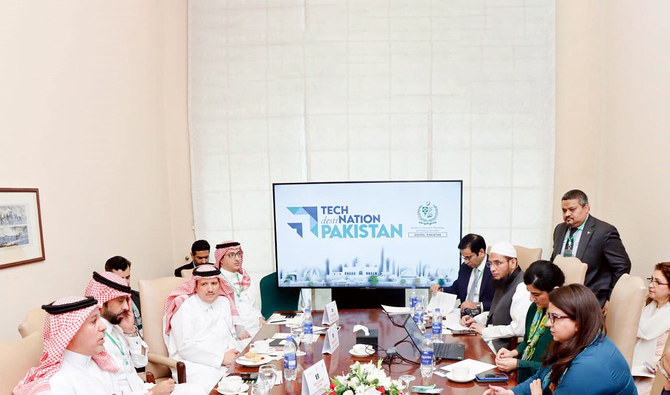ISLAMABAD: Over 70,000 intending Pakistani Hajj pilgrims have registered so far for the ‘Pak Hajj App’ launched last year to facilitate Pakistanis in all stages of the spiritual journey, state news agency APP reported on Tuesday.
Pakistan’s IT ministry last December announced the launch of the app for both Android and iPhone, developed jointly with the National Information Technology Board (NITB).
Around 179,210 Pakistanis will perform Hajj under both the government and private schemes, with this year’s pilgrimage expected to run from June 14-19.
“Pak Hajj App, through which online monitoring of all Hajj-related activities is performed, has received an overwhelming response in a short span of time, with over 70,000 active intending Pakistani Hajj pilgrims registered so far,” APP reported.
“Through this online service, the Ministry of Religious Affairs has received more than 20,000 suggestions/queries/complaints, which have been responded/resolved and disposed of in an efficient manner.”
The app provides all required information, including personal details of pilgrims and their groups as well as information about volunteers and additional facilities, Hajj dues, nominee information and bank account details.
Pilgrims can view their Hajj training schedules, including dates, times, and locations, through the app, which also displays flight details with flight numbers, departure cities, dates, and times for both departure and return flights. The app also presents information about Makkah and Madinah accommodations, including sector, building, and room details, and about the Maktab (camp) location.
The multilingual application allows pilgrims to check their Hajj dues and refund statuses as well as submit complaints, requests and general inquiries. At first two languages, English and Urdu were added, although the system has the provision to add more languages.
“It was established for improved coordination among all wings and departments of the Pakistan Hajj Mission to extend maximum facilities to intending Pakistani pilgrims,” DG Facilitation Cell and Complaint Management System in-charge Muhammad Ahmed Usmani told APP.
“It is greatly helping in the timely redressal of complaints of pilgrims and their proper guidance to minimize any inconvenience to them.”
The Facilitation Cell has a three-member National Information Technology Board (NITB) team of software engineers, mandated with removing technical glitches faced at the Hajj portal and improving system efficiency and quality. A five-member team is available at a call center to deal with complaints received on the portal.
Complaints could be lodged through the Pak Hajj App and WhatsApp, or by calling the Pakistan Hajj Mission’s helpline toll-free numbers: 00923376510003, 00923376510004, 00923376510005, and 00923063332555.
The nature of complaints, Usmani said, mostly related to accommodation, split families, room maintenance, lack of amenities, misplaced luggage and general lost and found services.
“As soon as a complaint is lodged, it appears on the dashboard/mobile phone screen within no time, with the proper zone officer concerned monitoring it live,” Deputy Director and In-charge NITB Development Team Makkah, Muhammad Awais, told APP.
He said the two ministries had also introduced an online app called ‘Hajj Moavineen’ under which real-time monitoring of support staff was performed from their place of deployment, “with visibility to all high-ups.”
It had multiple features including searching for a ‘Hajji,’ lost and found luggage or pilgrims, gifts distribution, and medical treatment, Awais said.
“All the features are run by scanning the QR code of the Hajji’s identity card, which contains all the required details of the pilgrims.
“We are getting great feedback from the Hujjaj about the online applications, which is a source of great satisfaction and motivation for us. All the information is available on a single platform where notifications are sent to them. All maps are integrated, which greatly helps in finding missing Hajji.”
Speaking to Arab News at the launch event of the Hajj app last year, then IT Minister Dr. Umar Saif said there were “so many little” moving parts to Hajj that one constantly needed a maulim, the Arabic word for teacher, for advice and guidance.
“In this day and age, we have replaced this human interface with an application ... designed to be a virtual mualim who is always with you,” the IT minister said.
“The app learns your behavior. It loads the schedule. It loads the events that take place. It loads the current location, the time and the day, and continuously advises you what to do next.”
He said the app would be able to provide guidance on everything from bus schedules and meals to flights and luggage.
“It is designed for low literacy users because a lot of people going for Hajj, of course, can’t be taught to use an application in English and Urdu,” Said explained.
“So, the app is designed specifically such that it continues to advise you, whether you are able to use the app or not, prompts you, advises you, proactively so that we make it easy for you to go through the entire process in steps of performing a Hajj.”
Baber Majid Bhatti, CEO of the National Information Technology Board, told Arab News the app also had an offline maps feature to facilitate pilgrims.
















